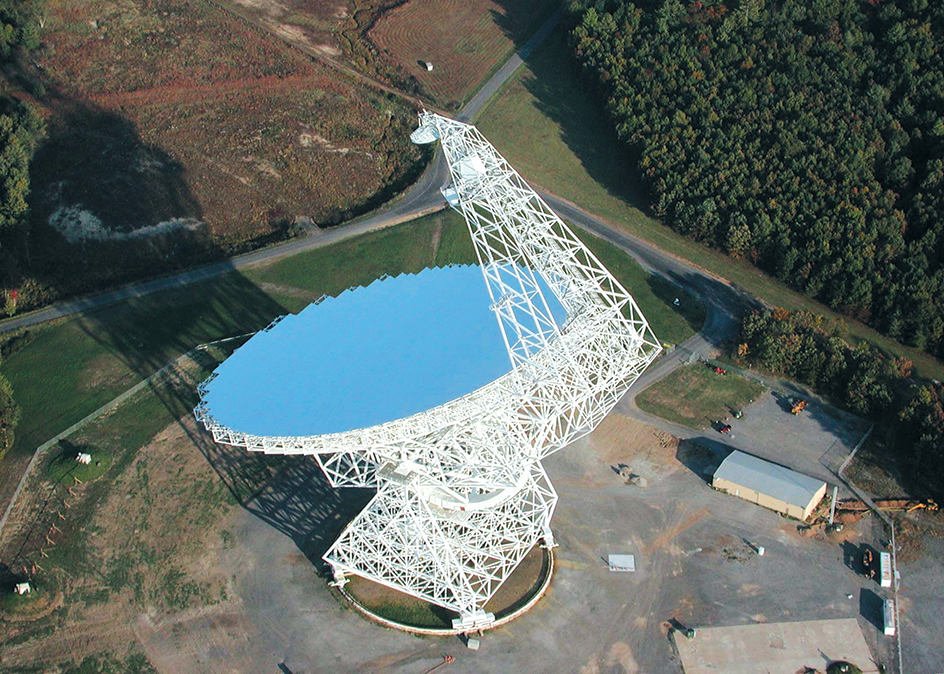Green Bank Telescope is one of the largest and most sensitive radio telescopes in the world. It is also one of the world’s largest movable structures; its dish antenna is more than 100 meters (330 feet) across. The telescope is part of the Green Bank Observatory and is funded partly by the National Science Foundation —an independent agency of the United States government—and partly by independent donors. It began operating in 2001.

The telescope stands in a mountain valley near Green Bank, West Virginia . Scientists selected that location to isolate the telescope from broadcasting stations and other artificial sources of radio signals.
The dish consists of about 2,000 aluminum panels. An arm extends over the dish. Radio signals from cosmic sources reflect from the dish and come to a focus near the end of the arm. Radio receivers and other instruments mounted at the focus amplify and record the signals. Motors can change the position of the dish to observe any point more than 5° above the horizon.
The telescope can detect signals that have wavelengths ranging from 3 millimeters (0.12 inch) to 3 meters (9.8 feet). A wavelength is the distance between successive crests of a wave. To detect short-wavelength signals well, the shape of the dish must be smooth to within 0.2 millimeter (0.008 inch). But changes in the wind and in the air temperature can distort the dish more than that. So lasers constantly measure the shape, and a computer-controlled system adjusts the panels based on the measurements.

The full name of the telescope is the Robert C. Byrd Green Bank Telescope. It is named for a United States senator from West Virginia.
See also Astronomy (Radio and microwave astronomy) ; Telescope (Radio telescopes) .
